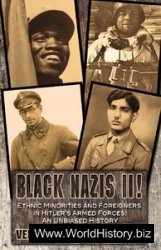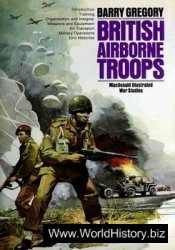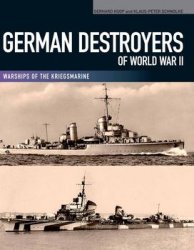Wehrmacht. The combined armed forces (army, navy and air force) of the Third Reich, created May 21 1935.
Wellington, Vickers (Br, WWII). Heavy bomber/reconnaissance torpedo-bomber: crew 5-7. Prototype flew June 15 1936; first production December 23 1937; quantity deliveries from October 1938. Nine squadrons by outbreak of war; operational from September 4 1939. Many variants evolved throughout war; design proved sturdy and versatile. Production until October 25 1945, total (all Marks), 11,461. Wellington III had two l,535hp Bristol Hercules XI engines; max. speed 261mph (420kph); eight 0.303in machine guns, 4,5001b (2,040kg) bombs.
Welsh, Air Marshal Sir William
(1891-1962). Br. Commander Eastern Air Command during “Torch” and the Tunisian campaign until February 1943.
Wepener, Battle of (April 9-25 1900), Second Boer War. Following victories at Sanaa’s Post and Red-dersberg, De Wet moved south to attack the garrison at Wepener. Strongly entrenched on kopjes outside the town, 1,700 men of the Colonial Division (300 casualties) under Col E H Dalgety held off the
6,000-strong Boer force (23 casualties) for 17 days. De Wet withdrew on* the approach of relief columns. The siege had significantly delayed his campaign against British lines of communication: he had pressed it largely because of Boer hatred of the Cape Colony Afrikaners who formed a large part of Dalgety’s force.
Werewolves. In spring 1945 Anglo-American staffs feared that the most fanatical Nazis would withdraw into Bavarian mountains, under codename “Werewolf” and leadership of Gen Walter Wenck, and make desperate trouble. So complete was the collapse of Nazism that'the idea turned out to be an illusion.
Western Air Plans. A series of carefully constructed plans for strategic bombing, framed by the British Air Staff in consultation with Bomber Command, 1936-40. They envisaged attacks upon German oil and aircraft production, the industrial concentration in the Ruhr and other industrial processes. They also provided for attacks upon the German fleet and to slow the advance of their armies.
Western Approaches. Atlantic approaches to the British Isles. The Battle of the Atlantic was controlled by this command, whose HQ moved from Plymouth to Liverpool in 1941.
Western Desert Air Force see
MEDITERRANEAN, WAR IN THE AIR
(1940-45).
Western Desert campaign
(September 1940-January 1943). Operations ebbed and flowed across the deserts of Egypt and Cyrenaica for almost two-and-a-half years. The British were challenged and reposted three times.
The Italian challenge took place between September 13 1940 and February 7 1941. The Italians invaded Egypt on September 13, but a week later halted at Sidi Barrani for logistic reasons before reaching the main British defensive positions 60 miles (96km) farther east at Mersa Matruh. On December 9 they were surprised and defeated by the British Western Desert Force, and driven out of Egypt. British forces then invaded Cyrenaica, taking the fortified ports of Bardia, Tobruk and Benghazi. The withdrawal of the Italian Tenth Army into Tripolitania was intercepted by British armoured forces at Beda Fomm, just south of Benghazi, where it was forced to surrender on February 7 1941.
Rommel’s first German challenge started in February 1941. The Afrika Korps landed at Tripoli during February, swept the British forces, weakened by withdrawals for Greece, out of Cyrenaica and laid siege to Tobruk; a succession of British counteroffensives led to the relief of Tobruk, and to Rommel’s withdrawal to Tripolitania to await reinforcements, December 1941.
In his second German challenge (January 21 1942-January 23 1943), Rommel first counterattacked, driving the British, this time weakened by withdrawals to meet the Japanese threat in the Far East, back to the Gazala Line just west of Tobruk. There he destroyed the British armoured forces in the Battles of Gazala in June, opening the way to his objective, the Suez Canal. His advance into Egypt had lost its momentum through supply difficulties, British air attacks, and the exhaustion of his Panzer-armee Afrika by the time he reached El Alamein where he was stopped by Auchinleck. He was then decisively defeated by Montgomery at Alam Haifa in August, and in the Battle of El Alamein in October 1942, and was forced to withdraw to Tunisia. WGFJ.
Western Front. The entrenched battle lines between the Allies and Germany extending from Belgium to the Swiss frontier, World War I.
Westmoreland, Gen William C
(b. l914). US. Became Commander, US Military Assistance Command, Vietnam (comusmacv), in June 1964. As chief tactical commander of American forces in Vietnam, his first task was to avert the almost certain collapse of the Saigon government. This he sought to do by building a logistical base for a large American force, then by searching out and destroying communist main force units in the highlands, helping the arvn to “pacify” the lowlands, and preparing the ARVN to complete the task when the US withdrew. His strategy was essentially one of attrition, as it counted on the relentless grinding up of enemy troops to force the North’s conventional army to retreat. For the purpose, Westmoreland emphasized “search and destroy” operations and heavy use of airmobility and fire power. Once the pavn had withdrawn, he theorized, the arvn would be able to cope with the local guerrillas that remained.
In November 1967, Westmoreland reported to the US Congress that victory was in sight. But the 1968 Tet offensive made that claim appear either ignorant or deceptive, and Westmoreland’s request for 206,000 more troops provoked a public outcry. Although Westmoreland believed the offensive was the communists’ “last throw of the dice”, his strategy had not depleted their ranks at a rate greater than replacement, nor weakened Hanoi’s resolve. The collateral damage caused by the operations his strategy required also
Aroused civilian animosity and international indignation. In July 1968, he was succeeded as com-usMACv by Gen Creighton Abrams. WST.
West Wall (“the Siegfried Line”). Fortifications along Germany’s western frontiers begun in 1938. They were finally put to use in the defence of Germany in 1944-45.
Westphal, Lt Gen (General der Kavallerie) Siegfried (b. l901). Ger. A planner of genius, Westphal was Kesselring’s cos, playing a major part in planning the defence of southern Italy, from mid-
1943. In September 1944 he became cos to von Rundstedt (and then to Kesselring once more, from March 1945) on the Western Front.
Weyand, Gen Frederick C (b. l916). US. Beginning June 1972, Weyand was the last commander of the US Military Assistance Command, Vietnam (macv). He had served previously in Vietnam as deputy commander of MACV (April 1970-May 1972), commander II Field Force (July 1967-July 1968), and commander 25th Infantry Division (January 1966-March 1967). He last visited Vietnam in March 1975 and reported, perhaps over-optimistically, to President Ford that emergency assistance of $722 million would be sufficient to prevent the defeat of Saigon’s forces.
Weygand, Gen Maxime (18671965). Fr. Born in Brussels — some suggest as Leopold IPs illegitimate son - Weygand became a French citizen and graduated from St Cyr in 1888 as a cavalry officer. For most of World War I he served with distinction as cos to Gen Foch, including the period from April 1918 onwards when the latter was c-in-c of the Allied Armies in France. In the early 1930s Weygand held the post of French CGS, supporting a moderate programme of modernization and the return of two-year service.
Having retired in 1935, he was recalled in 1939 to command the French forces in the Levant. On May 19 1940, with the Allied armies in France in disarray, he was summoned by PM Reynaud to succeed Gamelin as Allied c-in-c.
Despite his efforts to establish a new defensive front - the “Weygand Line” - behind the Somme and Aisne, the Germans broke through. By mid-June Weygand regarded the situation as hopeless and joined with Retain in seeking an armistice. Between June and September 1940 he was Minister of War under the Vichy regime and was then Delegate Gen to French North Africa. His anti-Axis opinions led to his removal in November 1941 and to arrest and imprisonment by the Germans the following year. Released in 1945, he was re-arrested by the French and charged with treason. However, he was exonerated in 1948. PJS.
Wheeler, Gen Earle G (19081975). US. Served as chair of the US Joint Chiefs of Staff from 1964 to 1970. An administrative officer with limited combat experience, Wheeler was senior military adviser to the President during the period of the rapid American build-up in Vietnam. He strongly recommended direct intervention in 1965 and encouraged Gen Westmoreland in 1967 to make the request for additional troops and a call up of reserves that eventually persuaded President Johnson that the war involved costs he, and the US, were unwilling to pay.
Wheeler, Lt Gen Raymond A
(1885-1974). US. Active service in Mexico, 1914, and in World War I. Sent to Burma during the British retreat early in 1942 to secure line of communication from Northern India to Gen Stilwell’s Chinese troops in North Burma. This was achieved by building the Ledo Road. At Quebec Conference of August 1943, appointed as Principal Administrative Officer to Mountbatten’s South East Asia Command. Responsible for the awesome task of coordinating all logistic support for seac’s multinational forces, integrating his staff with Mountbatten’s. On the departure of Stilwell in 1944, Wheeler was made Deputy Supreme Commander.
White Rose (Weisse Rose). Small resistance group led in Munich University by Hans and Sophie Scholl, who thought Hitler was Antichrist. On February 19 1943 they distributed a printed leaflet, saying so, and were arrested, tortured and killed.
White Russia. Following the Bolshevik Revolution of November 1917, conservative elements opposed to the new regime were generically termed “Whites”. Although for the next three years White governments and armies often held vast areas of Russian territory, their inability to coordinate their political and military efforts ultimately doomed their cause to failure.
Whitley, Armstrong Whitworth AW 38 (Br, WWll). Heavy bomber maritime reconnaissance; crew 5. Prototype flew March 17 1936; nine squadrons by outbreak of war. Deliveries of Merlin-powered Whitley V from August 1939. Considerable use Bomber Command; limited service with Coastal Command from September 1939. Later used as paratroop carrier and glider tug. Production, 1,812. Whitley V had two l,145hp Rolls-Royce Merlin X engines; max. speed 230mph (370kph); five 0.303in machine guns, 7,0001b (3,150kg) bombs.
Whittle, Air Commodore Sir Frank (b. l907). Br. Invented, designed and tested the first British jet engine. The first jet-propelled aircraft came into operational service with the RAF in July 1944.
Whitworth, Vice Adm Sir William (1884-1973). Br. Flag Officer, Battlecruiser Squadron, during the Norwegian campaign of 1940; fought the Second Naval Battle of Narvik in Warspite on April 13 1940.
Wieltje. Village, about 2 miles northeast of Ypres. After the Second Battle of Ypres in 1915 it lay just inside British lines and was in the sector of the 55th (West Lancashire) Division on July 31 1917, opening of Third Battle of Ypres. Taken by the Germans in April 1918; regained during the Anglo-Belgian offensive on September 28 1918.
Wiese, Lt Gen Friedrich (18921975). Ger. Commander Nineteenth Army in Southern France during the Allies’ landings in August 1944.




 World History
World History









